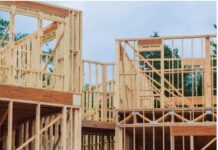Eileen Chadnick originally published these observations in her TGIMworklife blog. She has given us permission to republish her words. TL.
The notion of balance took on a whole new meaning for me these past few months. September through November tends to be my busiest season as I am involved in a particularly intense annual project and I’m juggling a whole bunch of other priorities along the way. I know that it’s impossible to go, go, go without losing steam somewhere along the way. I also have learned that the key to high performance isn’t necessarily about your ability to sustain the effort. The key is how you rest and recover.
Rest and recovery is essential for high performance. No one knows this better than high performance athletes.
Did you know that Olympians focus as much on their rest as they do on their actual skill/sport training? Earlier this year, I attended the Canadian Conference on Positive Psychology and heard a session on balance and resiliency by Dr. Greg Wells (one of many great speakers on a range of topics related to flourishing + wellbeing). He spoke to us via Skype as he was in London getting ready to report on the Olympics. Wells works with elite athletes and is an expert on high performance. His talk was about how we can learn from Olympians’ and incorporate similar habits to live (and work) a world-class life. Honing in the issues of maintaining high performance and resilience, Wells introduced the 1,3,2 Principle.
Wells said what distinguishes Olympian athletes is they know how to recover well. In their training these athletes stress themselves continuously to reach new heights. But most importantly, they also focus on recovery strategies so that they can perform their best.
You don’t have to be an Olympian to incorporate this into your life. We all can benefit from learning to recover better and faster from stress and demands of our work (and life). This will not only improve our capacity for greater performance in work and life but we’ll boost our mojo and wellbeing.
“Forget work-life balance,” Wells said, “It’s all about recovery and focusing on being heartier.”
Most of us will agree that the demands of work and life these days make it difficult to achieve a ‘balance’ each day/week/month so instead make sure you build in ample ‘recovery time’. He suggests the following the 1,3, 2 formula (as a minimum). The idea is to completely unplug from work:
- 1 hour (minimum) of total recovery a day
- 3 full days of recovery a month (in continuum…not separate days)
- 2 weeks of full recovery a year (in continuum…not separate)
Recovery activities may look different to each of us but the key is to be intentional in creating a recovery strategy that allows you to unplug from work so that you truly do refresh, rest and rebuild your reservoir of energy.
As I step into December and will soon have my holiday break I am going to take this very seriously. And I don’t save it all up for year-end. Last weekend, I booked a two-hour massage, went the gym and then I did a lot of slothing. I really needed it. Those who know me will appreciate that I don’t get to ‘sloth’ too much. But I now appreciate how important rest is to my performance.
So as you face your oncoming ‘busy season’ take a moment and ask yourself what your recovery and resilience strategies will be? And how can you put the 1,3,2 principle into action in your life?
Eileen Chadnick, ACPC, PCC, ABC
http://www.bigcheesecoaching.com/rest-and-recovery-the-keys-to-high-performance/
http://www.bigcheesecoaching.com
Tim Lawlor, Ottawa Construction News’s associate publisher, has rested, recovered and is ready for some resilience. He can be reached by email at tlawlor@cnrgp.com or phone (888) 432-3555 ext 111.







